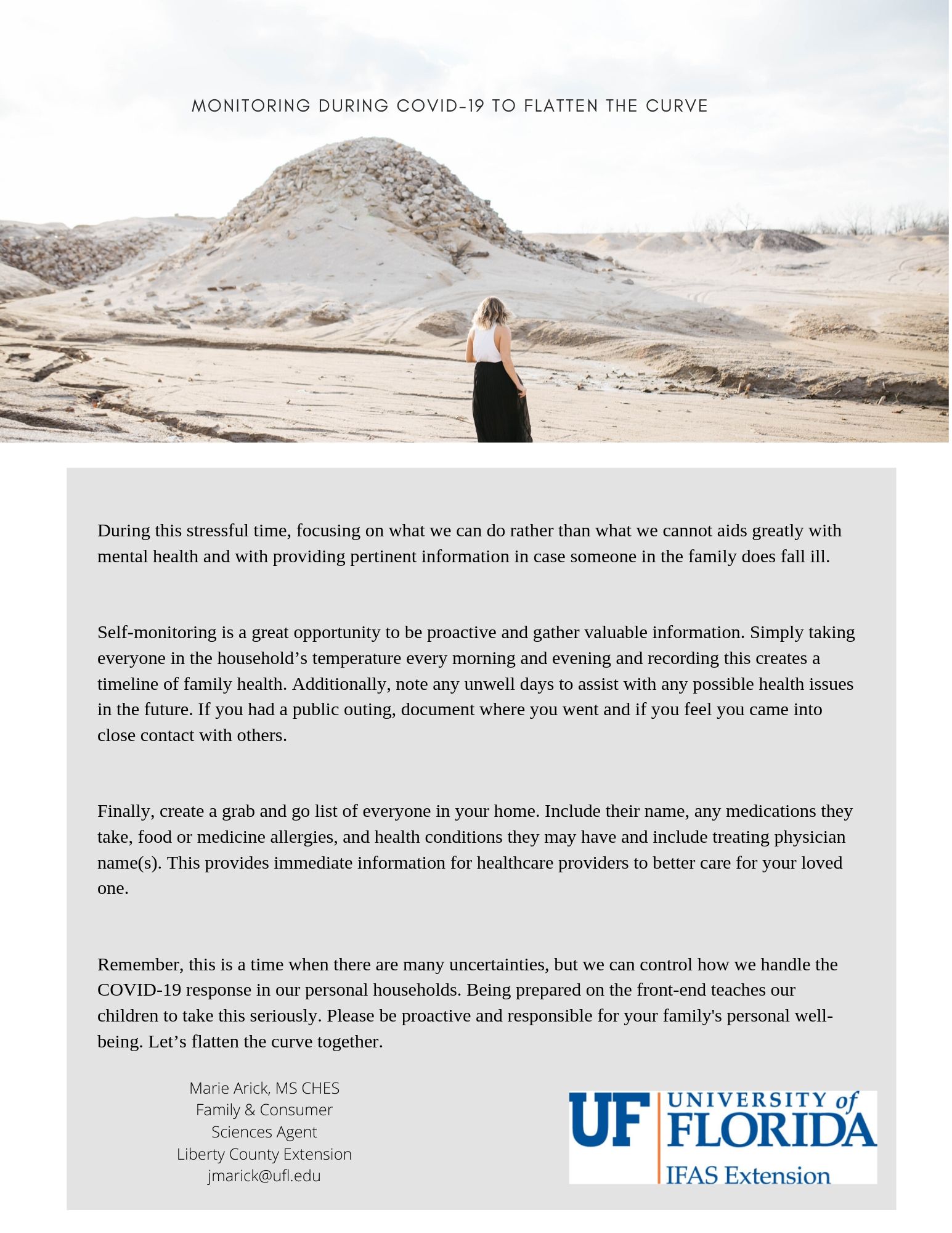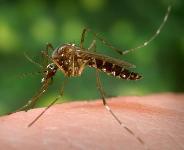by Julie McMillian | Apr 16, 2020
Can I go outside during the Coronavirus Pandemic? Is it a smart idea? As we are instructed by the CDC to isolate ourselves and embrace social distancing, we may start to feel a little restless or stir crazy after staying inside for a long period of time. Spring weather is great, especially in the mornings and evenings, here in Florida. Normally we would be entering a time when people are the most active outdoors. This year we must be a little more creative when deciding what we can do to enjoy daily activities outside of our home.

Family playing outside
Photo Source: UF/IFAS
Children usually need no encouragement to go outside. Youth that spend more time outside have positive outcomes with their health by interacting with their natural environments. They are curious about the world around them and their experiences outside will benefit them in regard to a positive attitude toward their environment. Adults have those same benefits but tend to forget or not have time in everyday life as it gets busy.
Therefore, the question is, what can we do that will keep us at a distance and be educational and productive? If you live in less populated areas, you might plant a garden, build an outside project that you have been putting off, enjoy a picnic, or hike and sight-see through the woods. If in the city and able, go for a walk or jog with your dog, take a bike ride or do some yoga especially if you are missing the gym. Your medical professionals will be glad you are participating in some physical activity and breathing in some fresh air. You might want to get in a lawn chair and just relax and soak up some vitamin D from a few minutes in the sun.
If you have recently become your child’s teacher, you can have learning activities outside. Science and math can be integrated by building a house out of natural resources, allowing students to collect materials and build while fostering creativity. Talk about ecosystems of trees and plants and how they might provide a home for insects or animals. Students could take a piece of paper outside and define what they see in their yard, integrating spelling and vocabulary, or write a short story based on what they hear and observe.
We are living and facing challenges today that we probably have not encountered before, so it is a good time to find an outlet to relieve stress and detour the onset of depression. The web is full of ideas for all ages if you run out of inspiration and some days we do. Remember to keep a safe distance from others, wash your hands frequently and follow your local guidelines but don’t be afraid to try something new that may be out of your ordinary routine. It might turn out to be your favorite hobby.
For more information on healthy living or other extension related topics, contact your local UF IFAS county extension office.
Supporting information for this article can be found in the UF/IFAS Extension EDIS publications:
Kids in the Woods
Why is Exposure to Nature Important in Early Childhood
COVID-19 Preventative Measures
UF/IFAS Extension is an Equal Opportunity Institution.

by Marie Arick | Mar 28, 2020
Monitoring during COVID-19 to flatten the curve; let’s focus on what we can do.

Flatten the Curve

by Kendra Hughson | Mar 26, 2020

Mosquito Aedes Aegypti_2020
Photo Source: UF/IFAS
Author: Whitney Cherry
COVID-19 has been driving public and private discussion as of late. But, we have to stay vigilant in working against all public health threats. One of the threats we typically start talking about this time of year is mosquito borne illnesses and preventative mosquito control. Not only are mosquitoes pests, but they can transmit some diseases we wouldn’t want, even under normal circumstances.
So what’s the reality? While the incidence of mosquito borne illness is much lower with the advent of modern medicine and basic public practices of wearing bug spray and dumping or treating standing water, it’s definitely not unheard of. The Zika scare is not such a distant memory afterall. And EEE (eastern equine encephalitis) was at an unusual high last year in horses in the panhandle. So what can we do?
With recent flooding in some areas and the weather warming, we can expect to see increasing populations of mosquitoes. Additionally, as the weather warms, we all tend to spend more time outside, increasing our likelihood of mosquito bites. Further exacerbating the situation are the widespread quarantine measures keeping many of us home. The late afternoon and early evening hours bring ideal weather to step outside and enjoy a little time away from TV and computer screens. We encourage fresh air and exercise outdoors, but we also encourage basic safety. So wear bug spray if you’re outside early morning and especially near, during, or shortly after dusk. Wear long sleeves and pants and socks if you can stand it. And keep standing water out of containers on your property. If this isn’t possible, look for safe water treatment options. The most prevalent spreaders of disease (Aedes aegypti) actually require these containers of water to complete their life cycle.
For more information on this or other Extension-related topics, call or email your local extension office.
Related mosquito information: http://edis.ifas.ufl.edu/results.html?q=mosquito+borne+illness&x=0&y=0#gsc.tab=0&gsc.q=mosquito%20borne%20illness&gsc.page=1

by Melanie Taylor | Mar 12, 2020

Speak openly with your doctor about any concerns you may have regarding your health. (Photo source: Tyler Jones, UF/IFAS)
We are in the depths of flu season and now the Coronavirus (COVID-19). Although we need to proceed with caution, we also want to avoid causing a panic. Both viruses are very concerning, but with good hand washing skills and a few other daily steps you can do your best to prevent you and your family from becoming sick.
Hand washing is one of the best ways to protect yourself and your family from getting sick. You can help yourself and your loved ones stay healthy by washing your hands often, especially during these key times when you are likely to get and spread germs:
- Before, during and after preparing food
- Before eating food
- Before and after caring for someone at home who is sick with vomiting or diarrhea
- Before and after treating a cut or wound
- After using the toilet
- After changing diapers or cleaning up a child who has used the toilet
- After blowing your nose, coughing or sneezing
- After touching an animal, animal feed or animal waste
- After handling pet food or pet treats
- After touching garbage
Follow these Five Steps Every Time You Wash Your Hands:
- Wet your hands with clean, running water (warm or cold) and apply soap.
- Lather your hands by rubbing them together with the soap. Lather the backs of your hands, between your fingers and under your nails.
- Scrub your hands for at least 20 seconds. Need a timer? Hum the “Happy Birthday” song from beginning to end twice.
- Rinse your hands well under clean, running water.
- Dry your hands using a clean towel or air dry them.
Use Hand Sanitizer When You Can’t Use Soap and Water
You can use an alcohol-based hand sanitizer that contains at least 60% alcohol if soap and water are not available. Washing hands with soap and water is the best way to get rid of germs in most situations. If soap and water are not readily available, you can use an alcohol-based hand sanitizer that contains at least 60% alcohol. You can tell if the sanitizer contains at least 60% alcohol by looking at the product label.
- Sanitizers can quickly reduce the number of germs on hands in many situations.
- Sanitizers do not get rid of all types of germs.
- Hand sanitizers may not be as effective when hands are visibly dirty or greasy.
- Hand sanitizers might not remove harmful chemicals from hands like pesticides and heavy metals.
How to Properly Use Hand Sanitizer:
- Apply the gel product to the palm of one hand (read the label to learn the correct amount).
- Rub your hands together.
- Rub the gel over all the surfaces of your hands and fingers until your hands are dry. This should take around 20 seconds.
Caution! Swallowing alcohol-based hand sanitizers can cause alcohol poisoning if more than a couple of mouthfuls are swallowed. Keep it out of reach of young children and supervise their use.
Conclusion – Other Basic Tips to Prevent Spread of Illness:
- Wash your hands often with soap and water for at least 20 seconds. If soap and water are not available, use an alcohol-based hand sanitizer.
- Avoid touching your eyes, nose and mouth with unwashed hands.
- Avoid close contact with people who are sick.
- Stay home when you are sick.
- Cover your cough or sneeze with a tissue, then throw the tissue in the trash.
- Clean and disinfect frequently touched objects and surfaces.
Be sure to utilize credible sources to find your information. The Centers for Disease Control and Prevention (CDC) and the Florida Department of Health are excellent resources.
CDC page Preventing COVID-19 Spread in Communities https://www.cdc.gov/coronavirus/2019-ncov/community/index.html
CDC frequently asked questions (FAQs) https://www.cdc.gov/coronavirus/2019-ncov/downloads/2019-ncov-factsheet.pdf
Florida Department of Health frequently asked questions (FAQ) http://www.floridahealth.gov/diseases-and-conditions/COVID-19/faq.html
If you have further questions or concerns, please contact your local Department of Health for assistance.
Sources:
Center for Disease Control and Prevention – https://www.cdc.gov/
Florida Department of Health – http://www.floridahealth.gov/

by Melanie Taylor | Mar 11, 2020
This month brings awareness and education about the importance of our kidneys in maintaining a healthy life. Kidney function is unique because you may not notice the symptoms until the function is already far gone. The CDC reports chronic kidney disease is a condition that 1 in every 7 adults (age 18 or older) in the United States has, as well as people with end stage renal disease who need dialysis or a kidney transplant.
How do your kidneys keep you healthy?
- Help remove excess fluid levels in the body.
- Make vitamins that control growth.
- Activate Vitamin D for healthy bones.
- Filter wastes from the blood.
- Control the production of red blood cells.
- Release hormones that help regulate blood pressure.
- Help regulate blood pressure, red blood cells, and the amount of certain nutrients in the body, such as calcium and potassium.
There are many complications associated with kidney disease. They include cardiovascular disease, nerve damage, heart attack, weak bones, high blood pressure, stroke, anemia/low red blood cell count and of course kidney failure.

Speak openly with your doctor about any concerns you may have regarding your health. (Photo source: Tyler Jones, UF/IFAS)
The main risk factors for kidney disease and the problems associated with it are high blood pressure, diabetes, family history, and being 60 years old and above. Out of these four problems, two of them – high blood pressure and diabetes – may be managed by maintaining a healthy lifestyle, taking medications as prescribed, regular visits to your doctor and exercise. If you have been diagnosed with either of these two, you need to regularly monitor your blood pressure and glucose levels, take medications if prescribed, and speak openly with your doctor about concerns or questions you may have. Family history and being over the age of 60 are not issues you can control, but you can strive to live a healthy lifestyle and regularly have blood work drawn so your doctor can help catch any issues that are becoming a problem. Learning to maintain and follow your doctor’s orders will go a long way to keeping you and your kidneys healthy longer.
What are the symptoms you may notice if you are experiencing kidney problems?
- Swelling in your face, hands, abdomen, ankles, and feet.
- Blood in your urine or foamy urine.
- Puffy eyes.
- Difficult, painful urination.
- Increased thirst.
- Fatigue.
If you notice any of these problems or are just concerned because of family history, your family doctor can order the blood work to check your kidney function. If you find out you are experiencing kidney problems you should see a nephrologist – a kidney specialist.
Although many people ignore the importance of their kidneys, they play a very important part in our daily bodily functions in regulating minerals, fluids, blood pressure, and so much more. Striving to maintain a healthy lifestyle will help to ensure your kidneys keep working hard for you. Be sure to show your kidneys some love this March to celebrate National Kidney Month.
Sources:
National Kidney Foundation – https://www.kidney.org/
Center for Disease and Prevention – https://www.cdc.gov/

by Dorothy C. Lee | Feb 3, 2020
February is National Heart Health Awareness Month. On February 7th join the nation and wear red to show support and awareness for women and heart disease.
National Heart Awareness Month is sponsored by the American Heart Association. It is designed to provide the public with information that could lead to a more healthful lifestyle and reduce heart disease.

Go Red for Women’s Heart Health
Photo Source: Dorothy Lee
The Centers for Disease Control and Prevention estimates that 610,000 people die of heart disease in the United States yearly. According to the American Heart Association heart disease and stroke kills one in three women yearly in the United States. Heart disease is a silent killer. It often strikes without warning.
Know the risk factors and symptoms of heart disease. Risk factors are family history of heart disease, diabetes, poor diet, high blood pressure and cholesterol levels, excessive alcohol use, smoking and physical inactivity.
The diet choices we make today are important to our nutritional well-being tomorrow. A diet low in saturated fat and cholesterol, high in fruits and vegetables, and grain products that contain some type of dietary fiber may reduce the risk of heart disease.
Our health is our most precious possession. A healthy diet is only one part of a heart healthy lifestyle. Physical activity is another important component. The American Heart Association physical activity guidelines recommend some type of aerobic exercise daily. Walking, dancing, biking, swimming, or gardening are good examples. Be sure to consult your physician before starting any exercise program.
We are all concerned about maintaining good health. Take steps to a healthier heart. Develop good eating habits based on moderation and variety, plus physical activity can help keep and even improve your health. So, reach in the back of the closet and find that little red dress and wear it this year on Friday, February 7th in support of Women’s Heart Healthy Awareness. Go Red!
Resource: www.heart.org
For further information, contact:
Dorothy C. Lee, C.F.C.S.
UF/IFAS Extension Escambia County
3740 Stefani Road
Cantonment, FL 32533-7792
(850) 475-5230
dclee@ufl.edu










